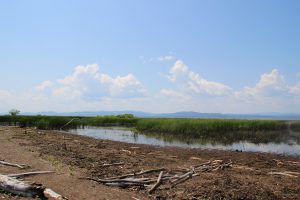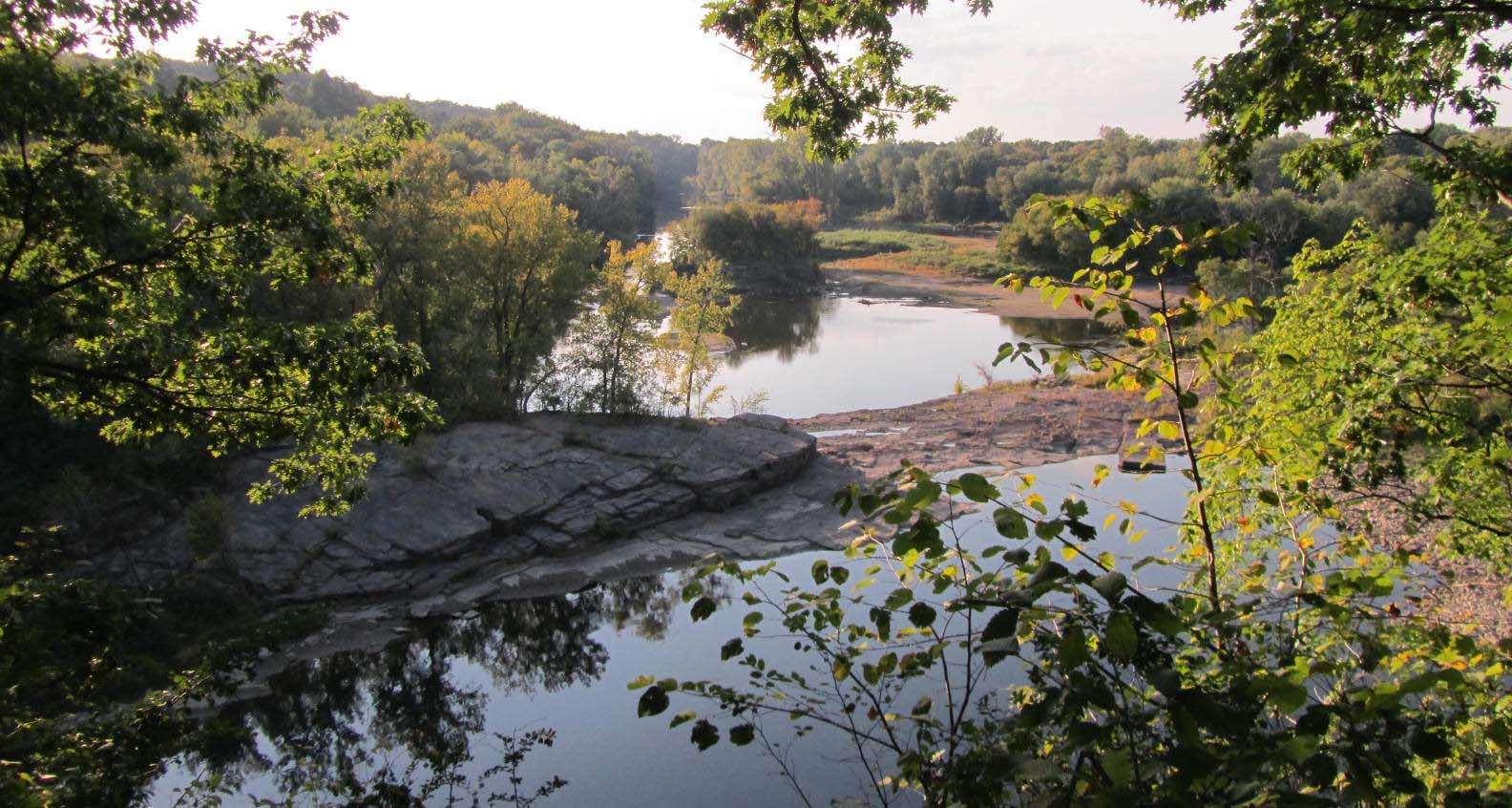Delta Park
Delta Park is a unique natural area owned by WVPD, located along the shore of Lake Champlain at the mouth of the Winooski River. The 55-acre park contains a diverse mix of ecosystems, including floodplain forest, marshy wetlands, and over ½ mile of natural sandy beaches, which are uncommon along Vermont’s Lake Champlain shoreline. The Park’s sandy beaches provide ideal turtle nesting habitat – an increasingly rare occurrence along the highly developed Lake Champlain shoreline. The extensive marshes and shoreline of Delta Park make it valuable as bird habitat too. It is an excellent birding location and is designated as one of 17 site-based IBAs (Important Bird Areas) in the state by Audubon Vermont. The trail through this park is a half mile, elevated bike and footpath with views of wetlands, Lake Champlain and the Adirondacks in New York. The bike bridge over the mouth of the Winooski River links this Park with Mayes Landing in Burlington, and is part of the Island Line Bike Trail.

July, 2017
There is a small parking lot, and a picnic area off of Windemere Way in Colchester. We ask those looking to bike the Island Line Bike Trail to use the parking located at Airport Park, on Airport Road as parking at Delta Park is limited.
Enlarged Image of Trail Map: Delta Park Trail Map
DELTA PARK RESTORATION PROJECT
In December 2023 and January 2024, the Winooski Valley Park District (supported by the Lake Champlain Basin Program, the New England Interstate Water Pollution Control Commission, and the Environmental Protection Agency) is initiating a multi-year, natural community restoration project within Delta Park to increase species biodiversity, build climate resilience, and restore and strengthen ecosystem health and services. The first step is the removal of non-native invasive trees and shrubs from the floodplain forest stretching along both sides of the Island Line Bikeway. This project was created and is being carried out by the Winooski Valley Park District, along with the help of generous and committed local volunteers.
As you travel along the bike path, look for our work and changes it brings. The most noticeable difference will be an opening of the landscape – where before there was dense, almost impenetrable invasive growth, you will now be able to see into and through the forest. This opening up allows native plants, trees, and shrubs to repopulate and thrive in their natural habitat, leading to an enriched ecosystem with increased resilience and biodiversity, which benefits wildlife – and people. And those piles of invasive brush? Yeah, they’re ugly, but they also serve as important habitat for numerous bird, small mammal, and insect species, as well as preventing the spread of seed to other locations.
If you have any questions, comments, or interest in the project please contact the Winooski Valley Park District at [email protected].
Interested in volunteering to help with the project? Contact WVPD Park Superintendent, Tim Larned, at [email protected]
This project has been funded wholly or in part by the United States Environmental Protection Agency (U.S. EPA) under assistance agreement (LC 00A00981-0) to New England Interstate Water Pollution Control Commission (NEIWPCC) in partnership with the Lake Champlain Basin Program.



